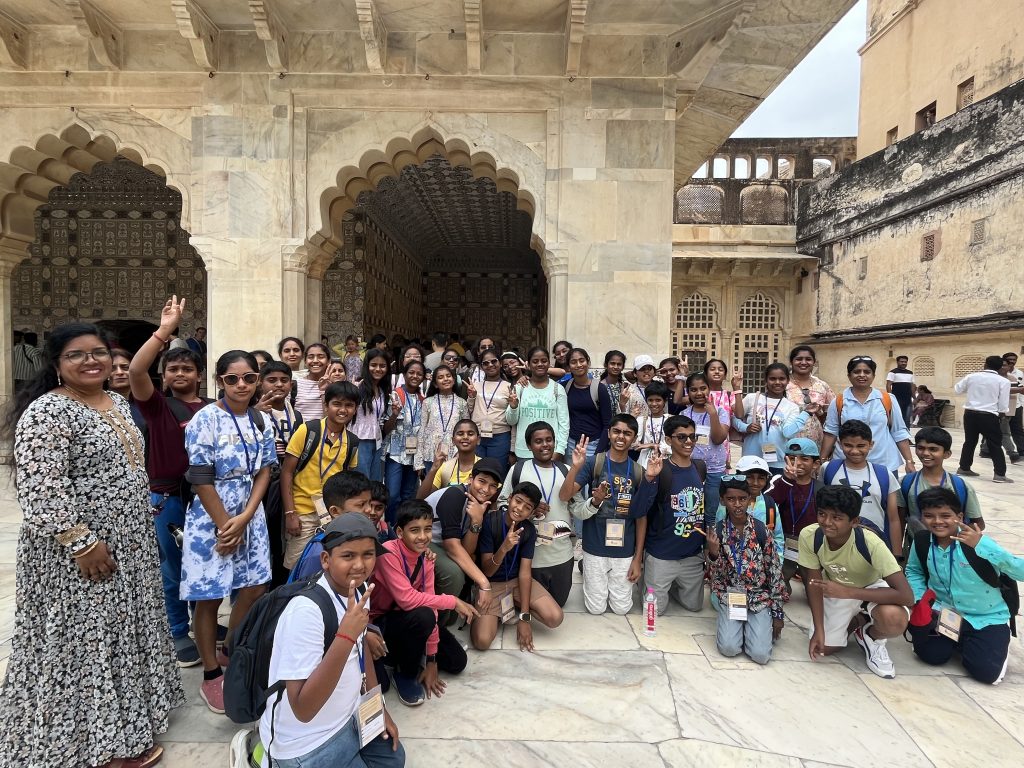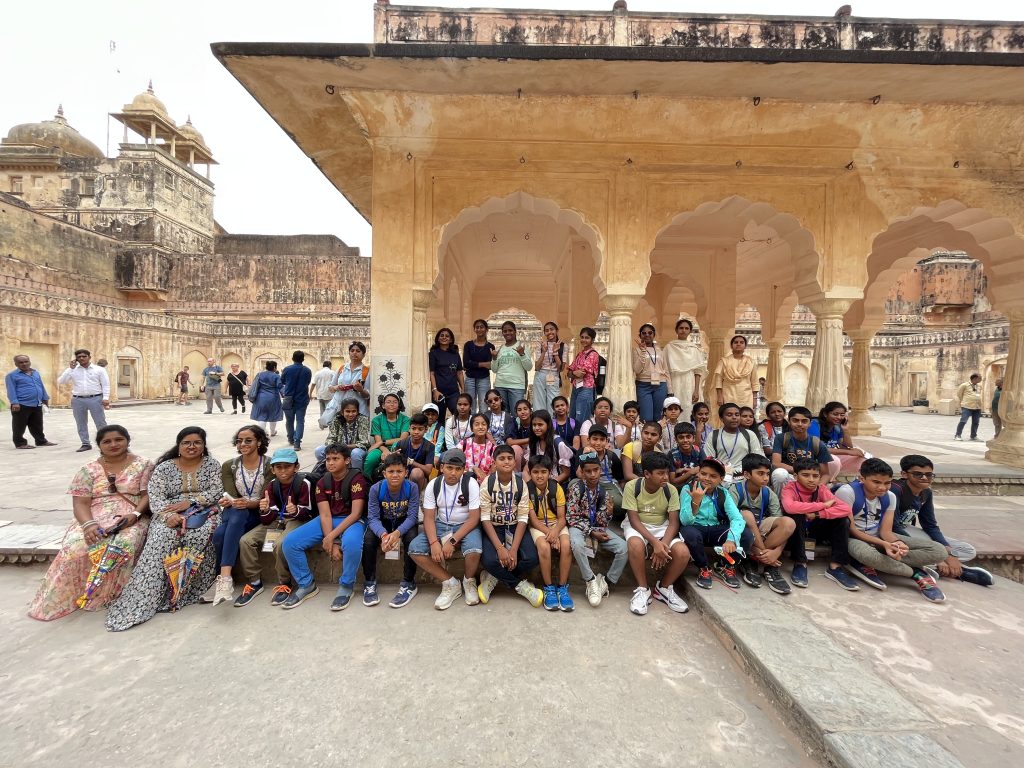Posted on Dec 26, 2023 in India Discovery,Student Speak
1 Comment

Amber Fort is a majestic monument situated in Amber, the capital of the Kachwaha Rajputs until 1728. Commissioned by Raja Man Singh, the fortress witnessed the reigns of notable rulers, such as Man Singh, Jai Singh I and Jai Singh II. The fort is built using pale yellow and pink sandstone and white marble and seamlessly fuses Hindu and Mughal architectural styles.

Nestled in the Aravallis, Amber Fort is strategically located on a hilltop with massive ramparts. The fort’s walls expand along the ridges to demarcate the city, serving as a formidable barrier safeguarding the city from potential invaders. The fort has two main entrances, namely Suraj Pol and Chand Pol. Some notable structures found inside the fort include Sheesh Mahal, Ganesh Pol, Mughal Garden, Diwan-i-Aam and Diwan-i-Khas.

The fort’s architecture reflects ingenuity, showcasing innovative construction techniques and clever mechanisms. A standout feature is the summer palace, which boasts a distinctive cooling system. It incorporates water storage within its domes, effectively sustaining a cool and refreshing atmosphere amidst the intense heat of summer. This architectural marvel stands as a testament to the remarkable ingenuity of its creators.

Here’s a brief account of our experience at Amber Fort:
We embarked on a strenuous trek up the ascent to the Amber Fort. Along the way, our gaze was captivated by Maota Lake, which looked gorgeous from an elevated vantage point. As we progressed towards the pinnacle of the fort, our expectations of a spacious pathway were met with a surprising deviation. Contrary to our anticipation, the path was not a broad expanse; instead, it was filled with numerous small vendors settled along the edges of the fort’s steps. These vendors offered an array of souvenirs and diverse items, creating an atmosphere that gave the impression of a narrower passage. Amidst the lively market scene, we also noticed the presence of several foreign visitors.

Within the fort’s walls, we discovered the king’s courtyard and two distinct palaces—one designated for common people and the other reserved for the Royals. A noteworthy architectural gem we encountered was Ganesh Pol, located in the main palace of the fort. It is adorned with an image of Lord Ganesha at the entrance, crafted in Mughal style and embellished with Persian motifs. Sheesh Mahal, also known as the Hall of Mirrors, captivated us with its glass-inlaid panels and multi-mirrored ceilings. It is said that the king imported Belgium glass for the construction of this hall. Venturing further, we explored rooms dedicated to the queens of the palace.

Constructed more than four hundred years ago, Amber Fort continues to inspire awe and admiration. Our visit to Amber Fort served as a powerful reminder of the importance of implementing our ideas with the same determination as the visionary founder of Amber Fort did over four centuries ago. Anyone visiting Jaipur should make it a point to explore this historical gem.
Writen By Lalith, Pradyum P, Siddharth.N & Sushruth V (Sunflower Vedic School, Hyderabad).
__
EdTerra Edventures conducts various other programs for the youth. If you go to school and are under 17 years of age, ask your school to contact us to arrange a visit to your school for an introduction to “Jaipur” and other journeys under EdTerra’s India Discovery Program.
For queries call +91-11-48885800 or visit EdTerra Browse Journeys page to know more about the programs for school students. Visit our FB page by clicking HERE. Also, check our podcast page by clicking HERE.

We visited Tokyo and...

The Statue of Liberty...

Auschwitz Camp in Poland...

Today, we are going...

We started our USA...

Have you ever wanted...

Singapore may be small...

Located in London, the...

Located in London, the...

Located in London, the...
See What Our Edventurers Experience!